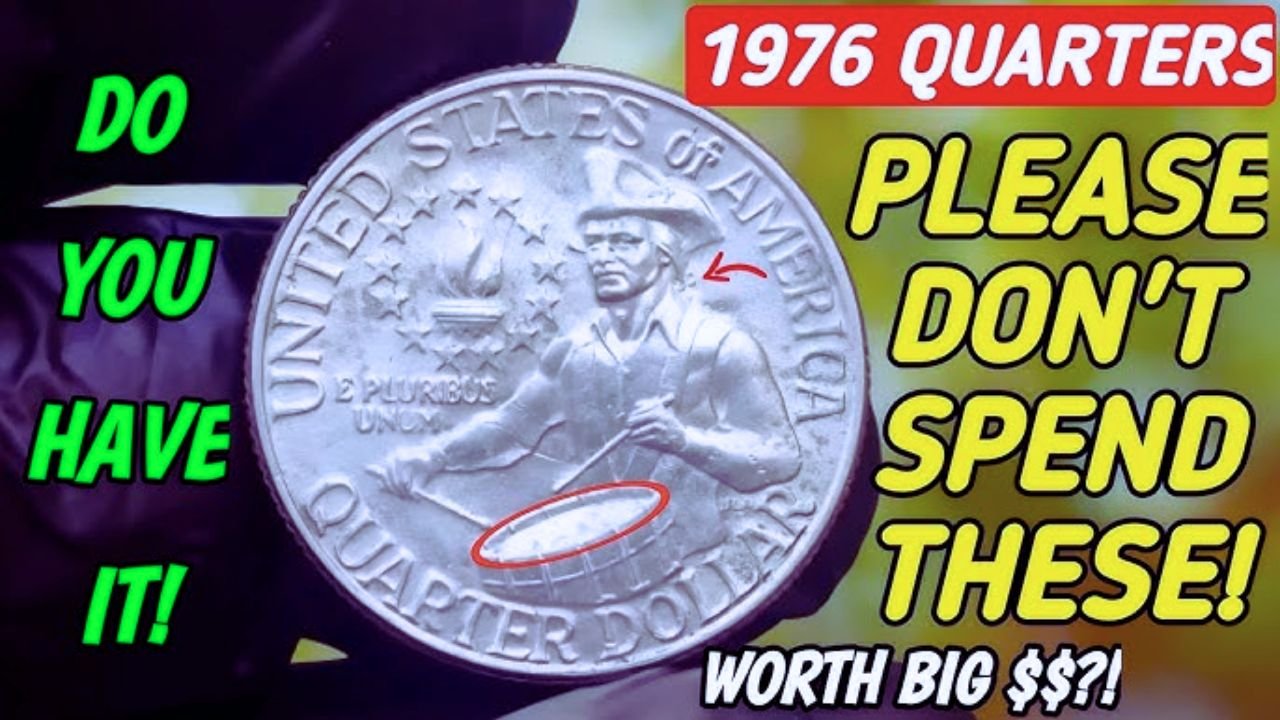Imagine finding a quarter in your pocket that’s worth millions! That’s the buzz around a rare 1976 Bicentennial Quarter, said to be valued at up to $11 million, and it might still be out there in everyday change. Minted to celebrate America’s 200th birthday, this coin has collectors excited due to its unique features and rare errors. Let’s explore what makes this quarter so special, how to spot one, and why it’s sparking a coin-hunting craze across the country.
A Coin with a Historic Twist
In 1975 and 1976, the U.S. Mint released special quarters to mark 200 years of American independence. Unlike regular quarters, these have a unique design: the front shows George Washington with the dates “1776-1976,” and the back features a colonial drummer with a torch and 13 stars for the original colonies. Over 1.6 billion were made in Philadelphia and Denver, with fewer in San Francisco, so most are worth just 25 cents. But a few rare ones, due to minting mistakes or special materials, can be worth a fortune, with one rumored to fetch $11 million.
What Makes This Quarter So Valuable?
The $11 million quarter is no ordinary coin. Experts believe it’s a prototype or error coin, possibly struck on a 90% silver planchet meant for special collector coins, not the usual copper-nickel mix. It might also have a minting error, like a double strike where the design appears twice, or a misaligned image. Coins in perfect, uncirculated condition (graded MS-68 or higher) with these traits are super rare, driving their value sky-high. The historical significance of the Bicentennial and collector demand make this coin a numismatic legend.
How to Spot the $11 Million Quarter
Think you might have this rare coin? Here’s what to check:
- Date: Look for “1776-1976” on the front.
- Design: The back should show a colonial drummer with a torch and 13 stars.
- Mint mark: Check for a “D” (Denver), “S” (San Francisco), or no mark (Philadelphia). An “S” or missing mark could be a clue.
- Material: Silver coins are shinier, weigh about 5.75 grams (vs. 5.67 grams for copper-nickel), and have a solid edge, not a copper stripe.
- Errors: Use a magnifying glass to spot double images, misaligned designs, or missing letters.
- Condition: A coin with no wear, looking brand new, is more likely to be valuable.
| Feature | Details |
|---|---|
| Date | 1776-1976 |
| Reverse Design | Colonial drummer, torch, 13 stars |
| Mint Marks | None (Philadelphia), D, S |
| Weight (Silver) | ~5.75 grams |
| Common Errors | Double strike, off-center, misaligned |
What to Do If You Find One
If you think you’ve got the rare quarter, don’t clean it—cleaning can ruin its value! Handle it by the edges to avoid scratches and store it in a soft cloth or plastic holder. Compare it to images of rare Bicentennial Quarters online, then take it to a professional coin dealer or grading service like PCGS or NGC for authentication. You can sell it through auction houses like Heritage Auctions, eBay, or local coin shops, but get an appraisal first to know its worth. Even if it’s not the $11 million coin, it could still be worth hundreds or thousands.
A Treasure Hunt in Your Pocket
The idea of a $11 million quarter hiding in your change is thrilling! While the price tag might be exaggerated—top verified sales include a 1976-S Silver Proof for $13,500—rare error coins or silver versions can still fetch thousands. With Bicentennial Quarters still in circulation, check your coin jars, wallets, or change from the store. This coin is a piece of American history, and finding a rare one could be a life-changing discovery. So, grab a magnifying glass and start hunting—you might just find a treasure

